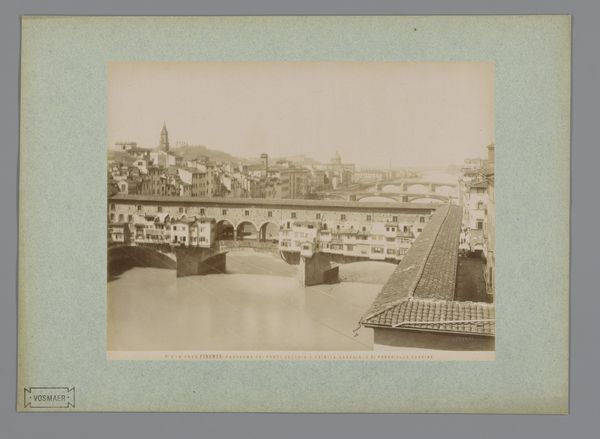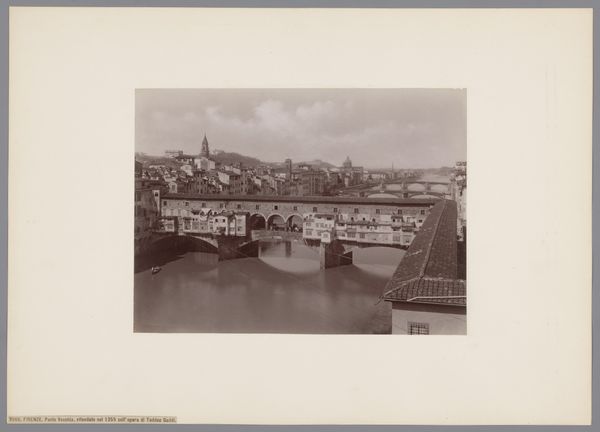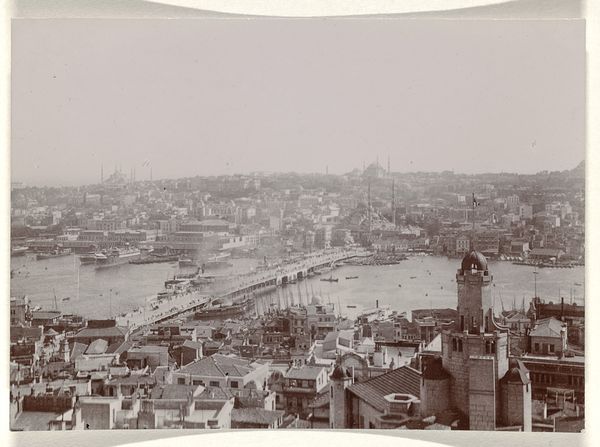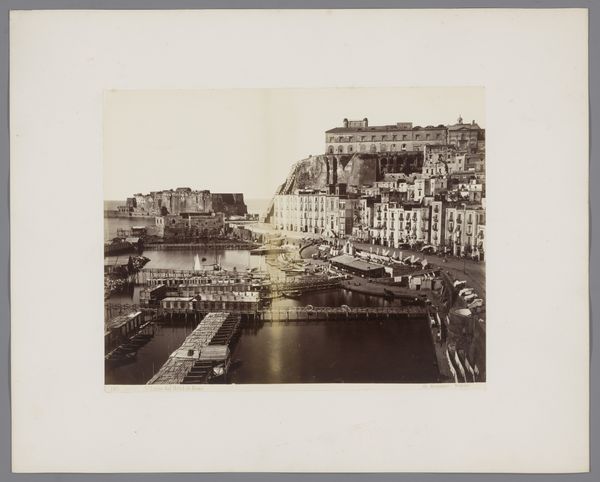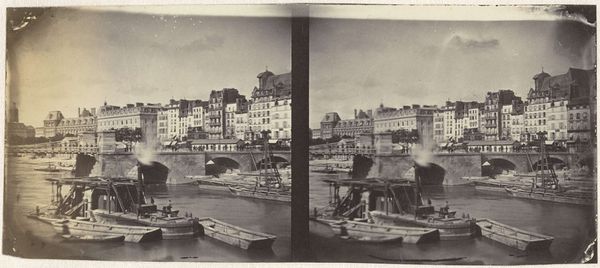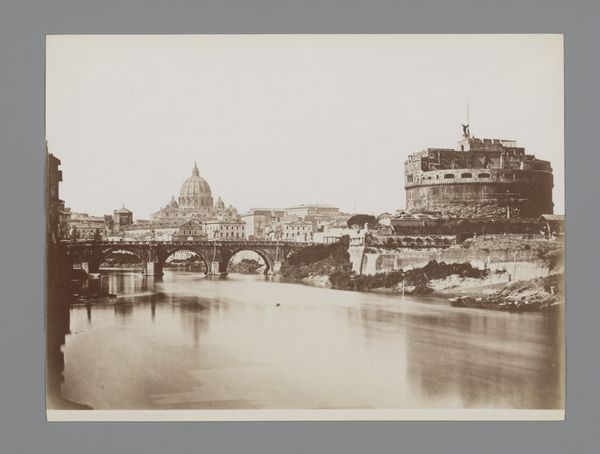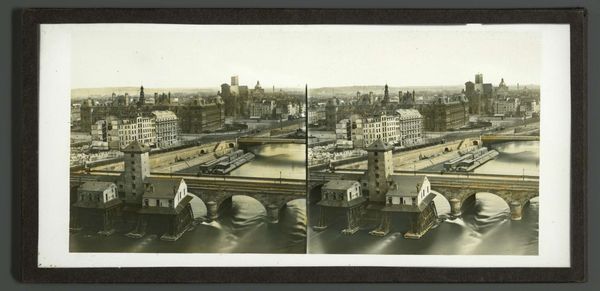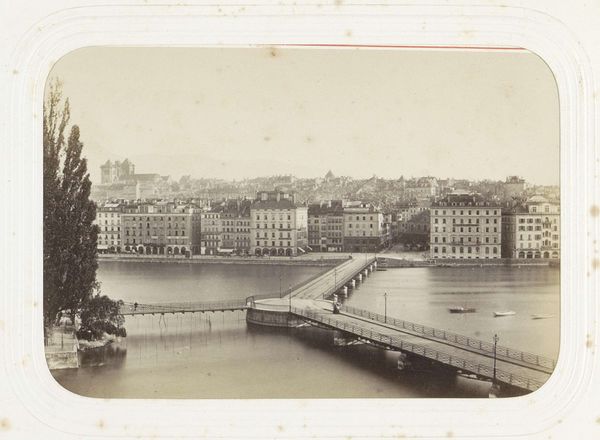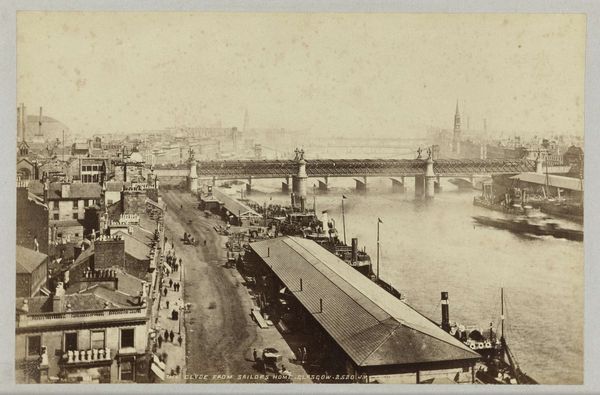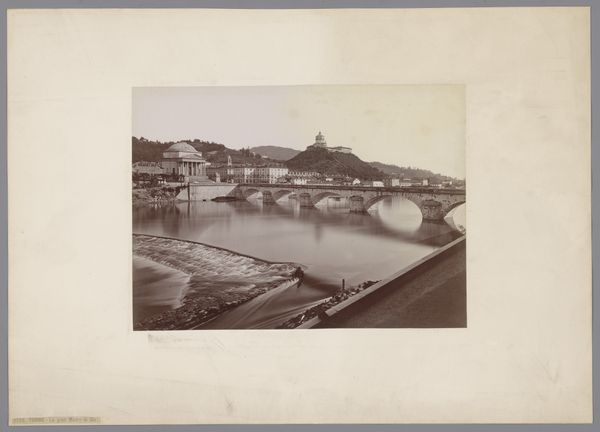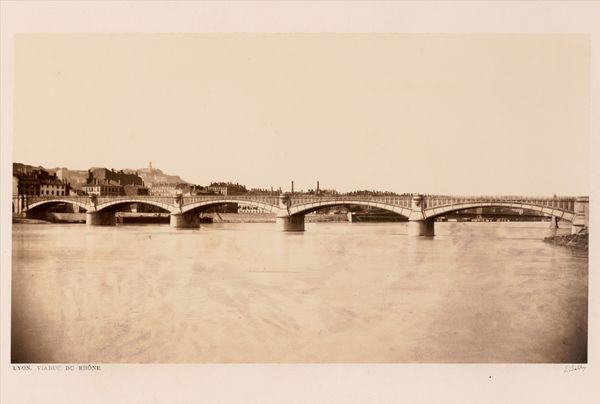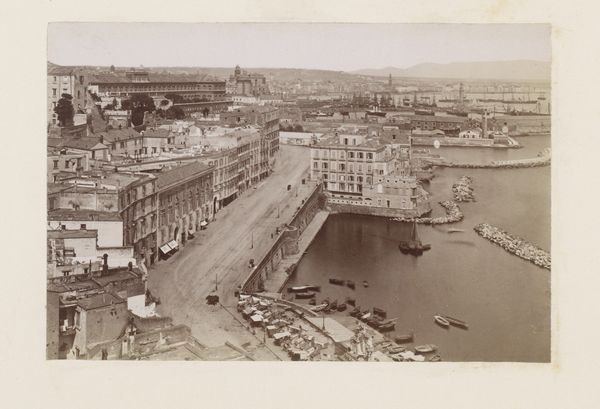
print, photography, albumen-print
# print
#
landscape
#
photography
#
monochrome photography
#
cityscape
#
albumen-print
#
realism
Dimensions: Image: 43.2 x 31.1 cm (17 x 12 1/4 in.) Mount: 46 x 60.5 cm (18 1/8 x 23 13/16 in.)
Copyright: Public Domain
Curator: Let's delve into Edouard Baldus's "Lyon," an albumen print dating from 1860 to 1862, offering a detailed view of the city and currently residing here at the Metropolitan Museum of Art. What are your first thoughts? Editor: Immediately, I’m struck by the stillness, that hazy, almost dreamlike quality rendered in sepia. The scene has a calm beauty, despite depicting urban infrastructure. It feels a bit melancholic. Curator: That stillness is deliberate. Baldus, working in 19th-century France, navigated the era’s rapid industrial and social change, commissioned for public works documentation and tourist imagery. He operated in a politically charged moment of modernization. Consider the long exposure times involved; the lack of people creates an interesting tension. Editor: The absence definitely amplifies the monumentality of the bridges and the city. It allows us to focus on the urban structure as a whole. We should examine who controlled these narratives during the rebuilding and modernization that disproportionately affected poor people, and what images got consumed by tourist gazes and postcards. Curator: Exactly. The photograph’s public role is central. It shows us Lyon not just as a place but as a carefully constructed representation of progress and imperial power. This type of photographic approach, capturing the scope and details of architectural developments, was useful to showcase how powerful figures could shape an era's image and legacy. Editor: Considering the print's tonality, and those immobile river barges in the foreground, I can’t help but think of themes like time, memory, and stillness, of how these romanticized or aestheticized landscapes could eclipse an acknowledgement of how industrial labor created structures and hierarchies within a bustling French center. What do you feel is his aim through his vantage point? Curator: It invites us to consider whose history is amplified and whose is left unseen or unrecognized within these cityscapes. He might have tried to frame history on the horizon of social upheaval, economic tensions and architectural grandeur during a new time. I now also ponder who it was that benefitted and at what cost through whose suffering? Editor: Yes, absolutely. I walk away contemplating the complexities of this romantic and very still landscape and how it interacts with the social, political, and often, unacknowledged stories. Curator: Indeed. "Lyon" offers an amazing interplay between documentary, propaganda and artistic expression and I am curious as to what others can find beneath the print.
Comments
No comments
Be the first to comment and join the conversation on the ultimate creative platform.
